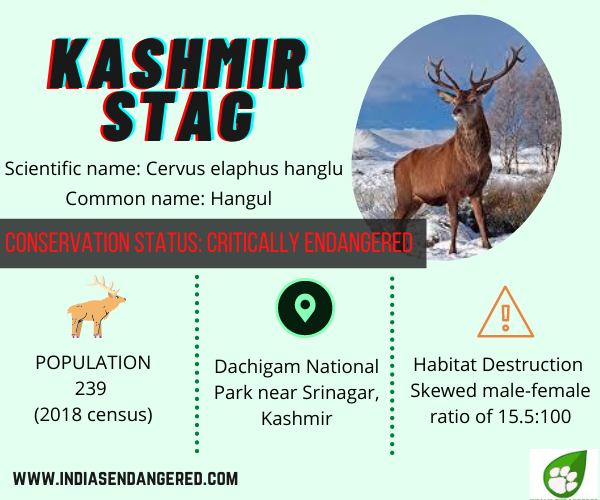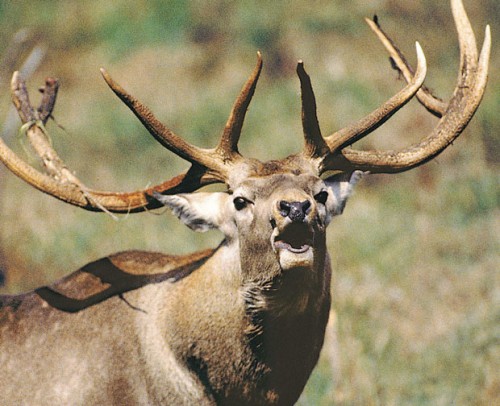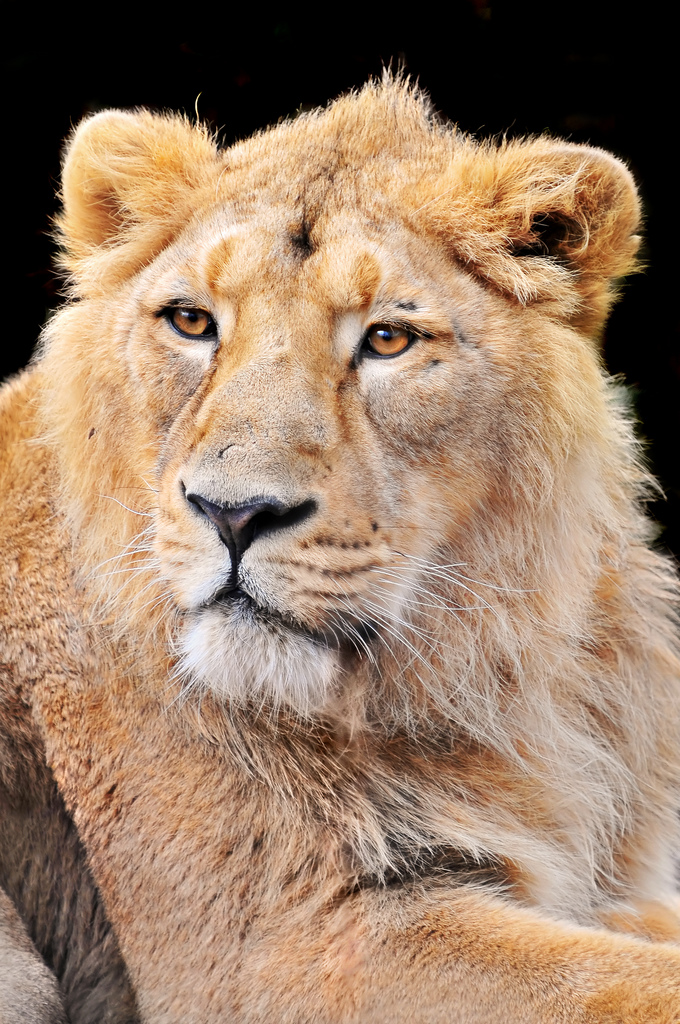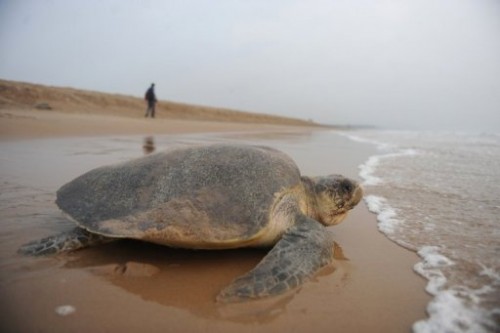Hangul or Kashmir Stag is one of the rarest deer in the world found only in Kashmir, India. Recently a herd of around 6 to 8 deer were seen in central Kashmir’s Ganderbal district, an encouraging sign that the deer are present in the area.
“A group of Hangul numbering about 6 to 8 has been sighted by locals opposite Naranag. Recently a friend has managed to click a snap,” wrote director industries Mahmood Shah on twitter.
120 years ago, more than 5,000 roamed the Kashmir landscape from east of the Jhelum to lower Chenab valley. But as the habitat became fragmented with borders, roads and human habitations, the stag found lesser and lesser area to roam or migrate.
Also Read: Kashmir plans to save the rare Hangul by finding the best genes
As per the 2019 census the numbers of the critically endangered stag are down to 239 in the valley which is still greater than the 217 recorded in 2014, but far off from being called a safe and secure population. What is more worrying is the skewed lowest ever male to female ratio and fawn to female ratio recorded in 2017. There were only 15.5 males per 100 females and 7.5 fawns per 100 females.
In recent months, to aid the ailing breeding centers, the local government has decided to collaborate with Laboratory for the Conservation of Endangered Species (LaCONES), a Hyderabad based research organization, to create a genetic profile of the Hangul.
During this project, the superior members of the deer population would be identified and allowed to breed to enhance the immunity of the offspring so that they can survive even in harsh conditions. The researchers would also study the issues that led to the decline of Hangul species and suggest ways to improve their habitat.
According to an official of the wildlife department, “We need six females and two males to begin with. Second, it should be done either in spring or autumn. Also, the age of the breeding stock is very important. The wrong age will turn counterproductive for the entire process.”
But while the artificial breeding program begins, it is always reassuring to see the wild population of the stag, which is very difficult to spot in the rugged terrains of the valley and especially in those higher altitudes.
Speaking to Greater Kashmir, Regional wildlife warden Kashmir, Rashid Naqash said, “Naranag (Wangath) area is a protected area and remains the oldest part of the Dachigam-Wangath-Gurez Tulail corridor.” He said they have received information about the moment of the Hangul in Wangath wildlife conservation area.
He said: “Till a few decades ago, Dachigam-Wangath-Tulail was the traditional summer corridor of the Hangul. However, fragmentation and increased human activity along the corridor hindered the movement of Hangul.”
About Hangul (Kashmir Stag)










